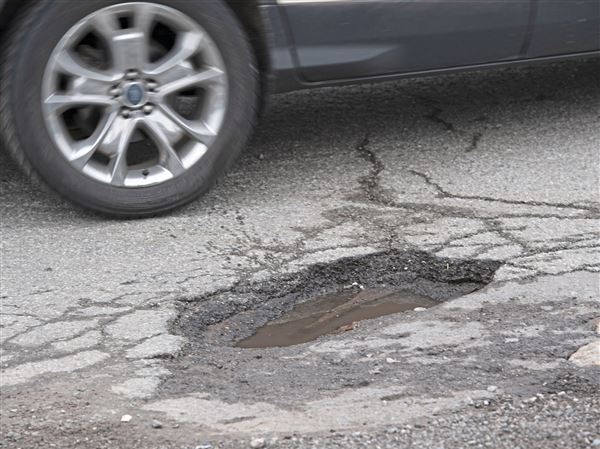Bred in the Philadelphia suburbs, Jake Sam crossed to the opposite end of the state to attend college, knowing little about this area but for the passion of Steelers Nation.
Five years later, he’s an Eagles fan with a University of Pittsburgh degree, a job with Steeltown Entertainment, a residence on the South Side and ample appreciation for Pittsburghers and their city.
And he’s not the only one. The latest U.S. census data available on migration patterns shows metropolitan Pittsburgh gaining more residents from the Philadelphia area than in the net exchange with any other region. That’s a far cry from trends years ago, when Pittsburghers were more likely to be headed east than the other way around.
“I absolutely have been seeing more Philadelphians here, and they are definitely feeling something for Pittsburgh,” said Mr. Sam, 24, who grew up in Valley Forge. “It’s blossoming in terms of art and culture. It’s blossoming in terms of a youth movement. … It’s drawing people in. You’ve got the landscape, the bridges, the rivers, everything.”
The film industry executive assistant’s path is represented in five years of migration data compiled as estimates by the U.S. Census Bureau’s American Community Survey. The survey annually measures a population sample on wide-ranging topics, including where people lived a year earlier.
In general, people are not moving nearly as much as they used to. The 11.2 percent of Americans who moved in 2016 is the lowest annual percentage ever cited by the bureau.
The bureau does not yet have local data for where people moved to or from in 2015 or 2016, but it recently released information covering the 2010-14 span. That was a rare era in the Pittsburgh region’s modern history because it was attracting more people from other parts of the U.S. than it was losing to other places. That occurred largely because the metropolitan area’s economy performed relatively well during and immediately after the Great Recession. The unemployment rate was lower locally than nationally for several years, which is no longer the case.
So although there’s a chance the migration trend has already abated, based on economic changes, the bureau estimates that there was net influx of 2,165 people annually from the Philadelphia-to- Pittsburgh metro areas in that 2010-14 span. The only two other regions thought to be sending at least 1,000 people a year our way, in terms of net migration in that period, were New York City (1,378) and Youngstown, Ohio (1,065).
The Philadelphia migration seems especially curious because it is a region that grew in population during those years (from a combination of births and international migration) at a time when the seven-county Pittsburgh area’s population was stagnant, and even losing a few thousand people compared with the 2010 census.
And it’s also counter to longtime trends. When the 2000 census was taken, people were asked where they had lived five years earlier. Philadelphia was one of the five metropolitan areas Pittsburgh lost the most people to between 1995 and 2000. With some 6 million residents, including the counties surrounding Philadelphia and several more in New Jersey, the population of Philadelphia’s metro area is more than twice the size of Pittsburgh’s.
Chris Briem, a University of Pittsburgh-based demographer and regional economist who has not reviewed the recent migration data, said it would make sense for Philadelphia and New York, as large population centers fairly close to Pittsburgh, to be the ones sending the most people to southwestern Pennsylvania when it had a relatively strong economy.
He also speculated that strong recent migration from the Philadelphia area could be attached to growth during the same period of Pittsburgh-area colleges and universities, as the Census Bureau considers students to be residents of wherever they’re studying full time rather than where their parents live.
“Comparing Pittsburgh to 20 years ago, college enrollments are up, and the mix of where they’re bringing students from is up,” Mr. Briem said. “There’s economic migration, there’s retiree migration, there’s student migration and then other migration. Most of the migration of the working-age population is economic- and job-driven.”
A recent study by the Philadelphia Research Initiative looked at county-to-county migration patterns in 2013, based on Internal Revenue Service data, and found that Allegheny County was among the counties sending the most people to Philadelphia but not among the counties to which Philadelphians were most flocking. That study thus offered no evidence of its own for the cross-state swap that the American Community Survey data suggested was taking place over 2010-14.
The ACS county-to-county data for those five years said Philadelphia County had the biggest net migration of residents to Allegheny after Erie County in New York (Buffalo’s county) and Orange County in Florida (Orlando). Allegheny saw the biggest out-migration to Butler County, Beaver County and a different Erie County — the one in Pennsylvania.
“If you look at the IRS and census data, you see a lot of movement within the state from one place to another, but that’s always been the case,” said Larry Eichel, director of the Philadelphia Research Initiative, which is part of the Pew Charitable Trusts.
There may be no definitive explanation for the census data showing Greater Philadelphia recently sending more people here than receiving Pittsburghers, but Mr. Sam is one who sees justification for the movement. He likes southeastern Pennsylvania, too, but the prospect of a long stay here also sounds fine.
“I am not one to plan super far ahead, but there are a lot of opportunities in Pittsburgh and there are a lot of great people in Pittsburgh,” he said. “If I find myself here in five years or 10 years, I’m going to be ecstatic.”
Gary Rotstein: grotstein@post-gazette.com or 412-263-1255.
First Published: January 2, 2017, 5:00 a.m.


















